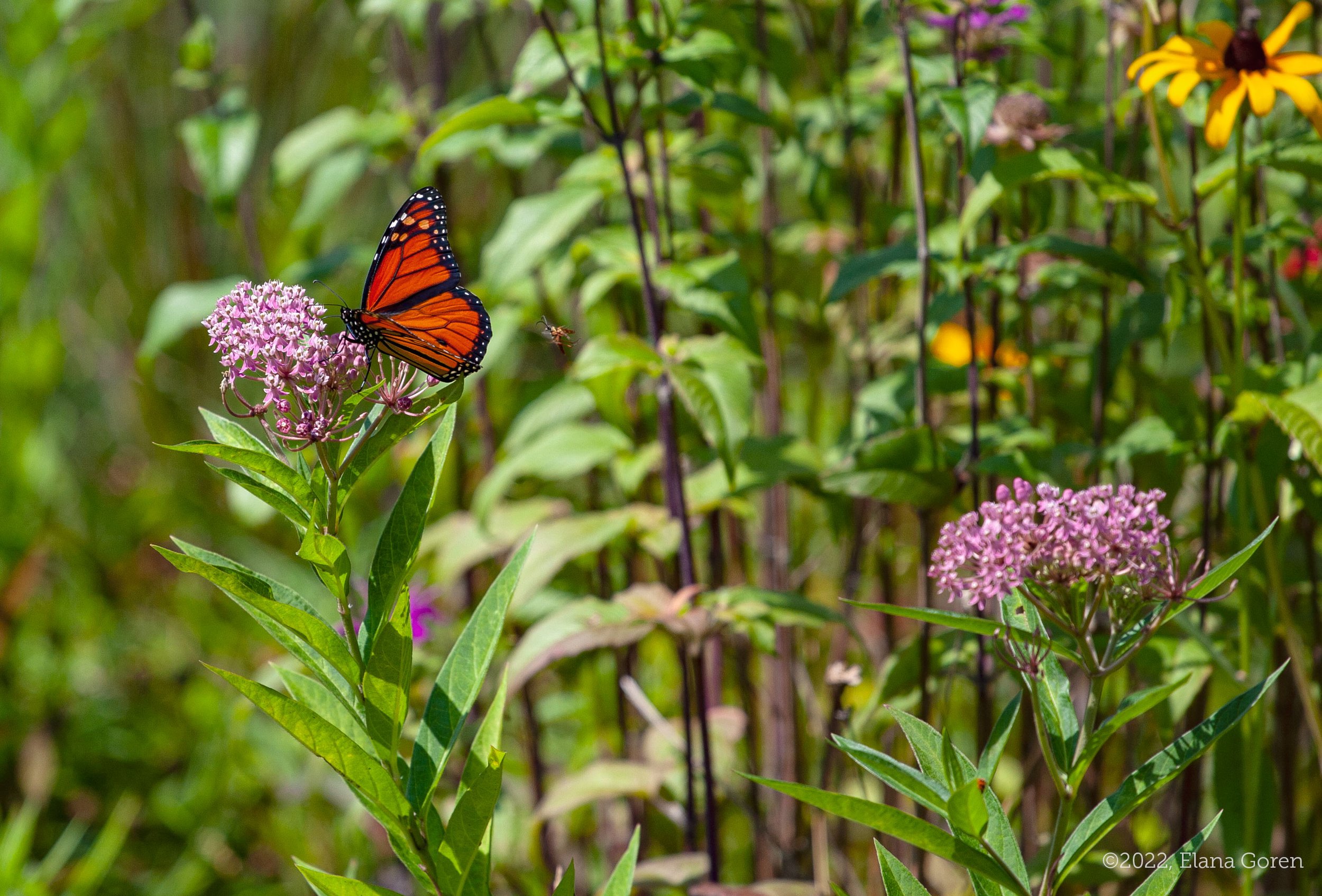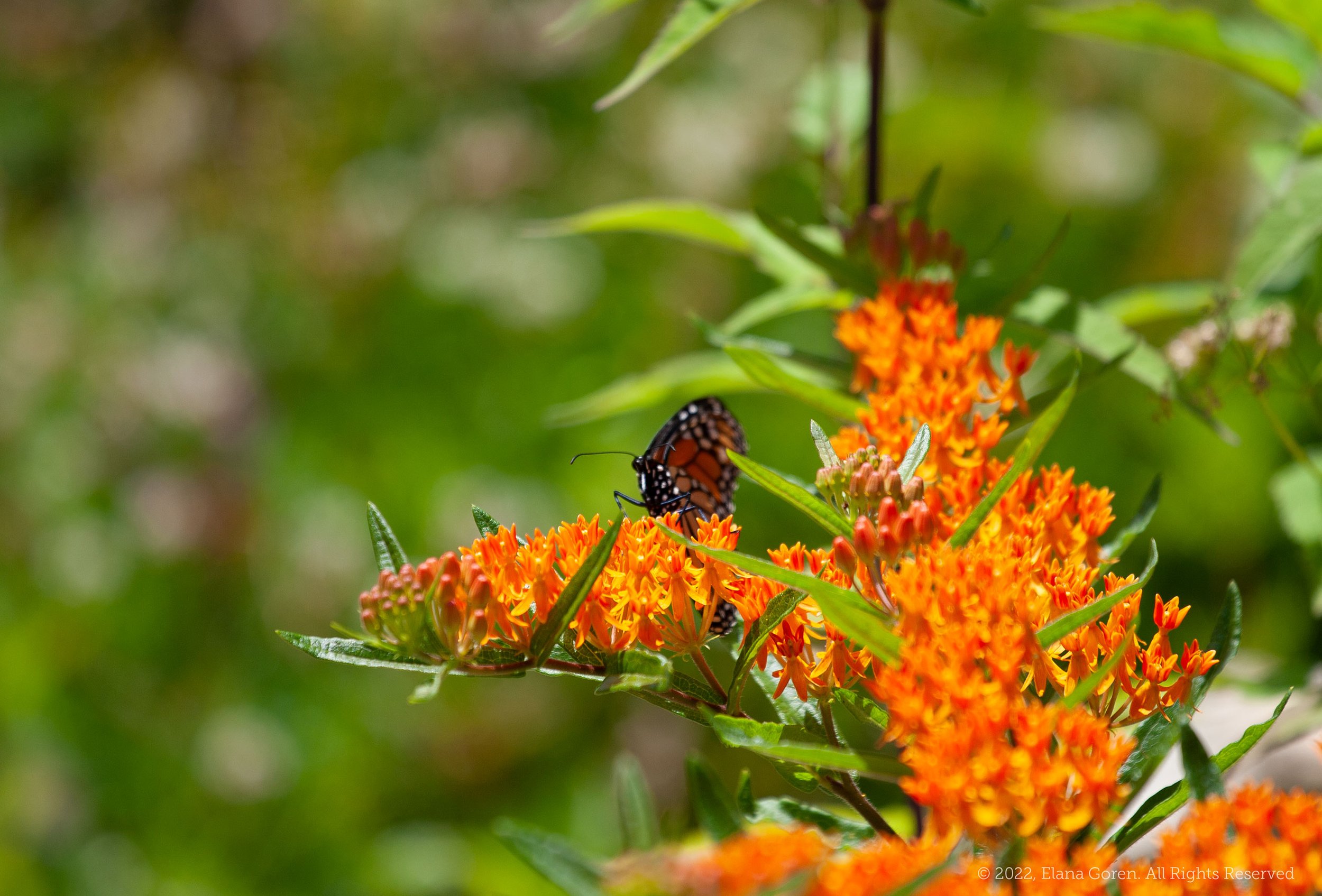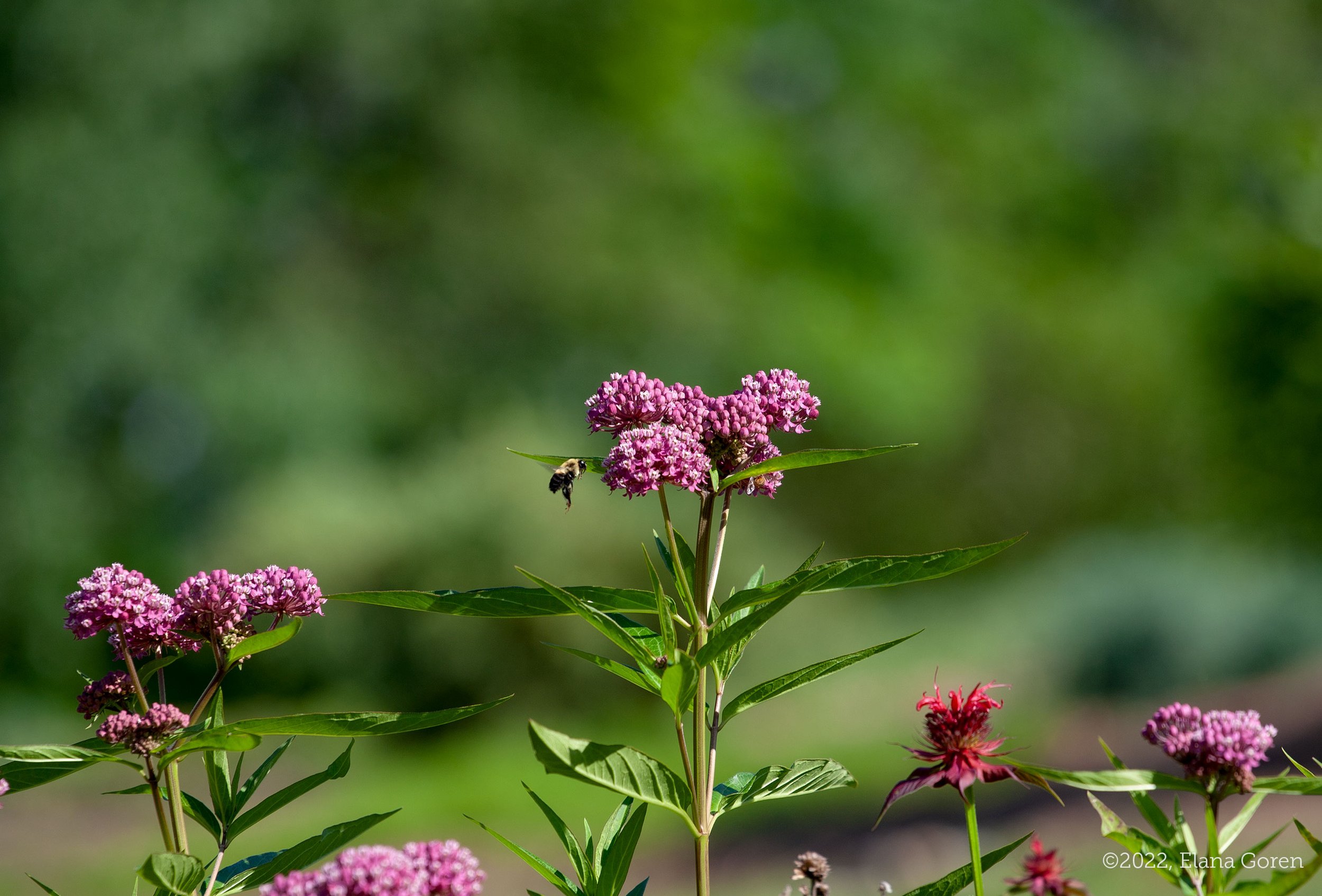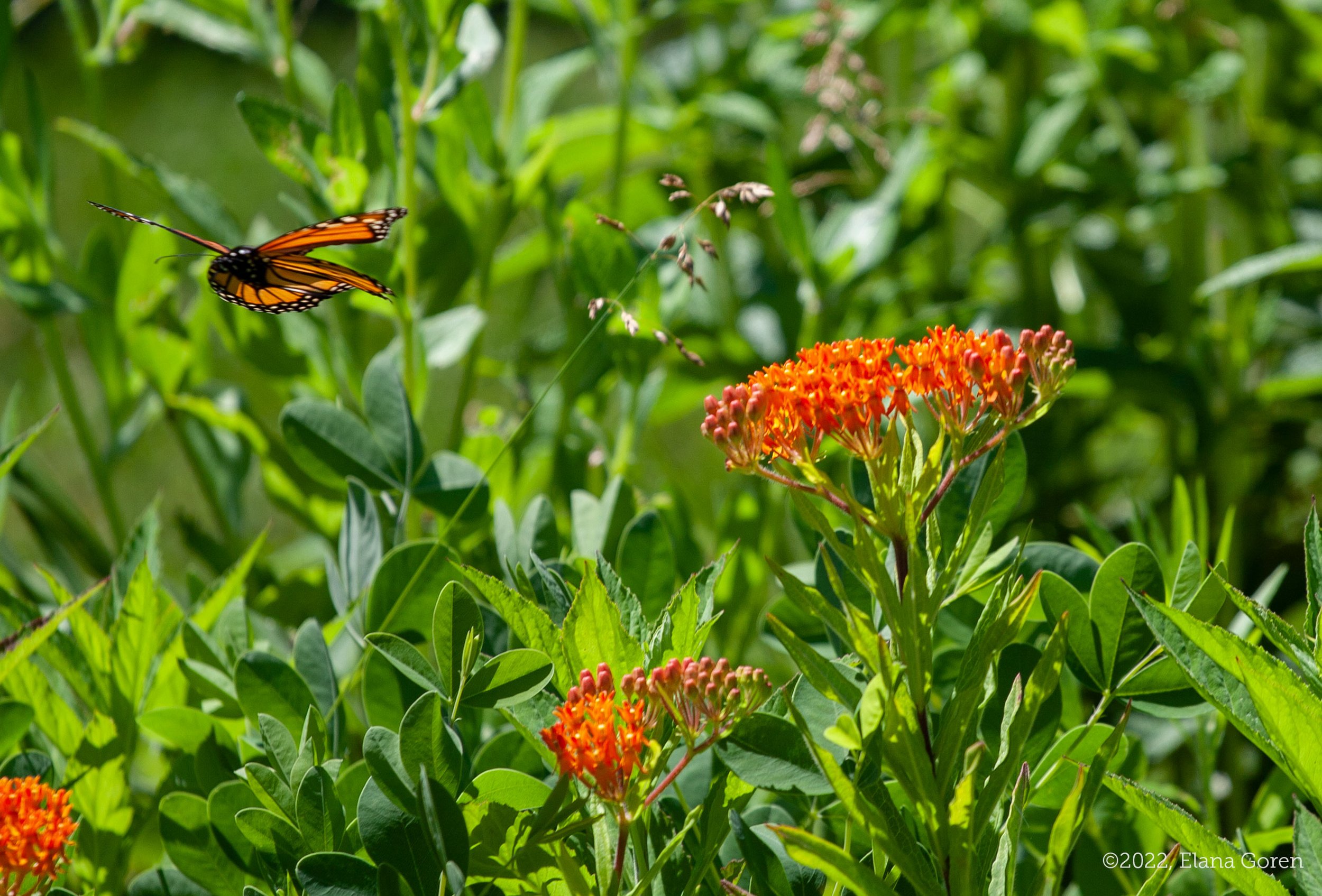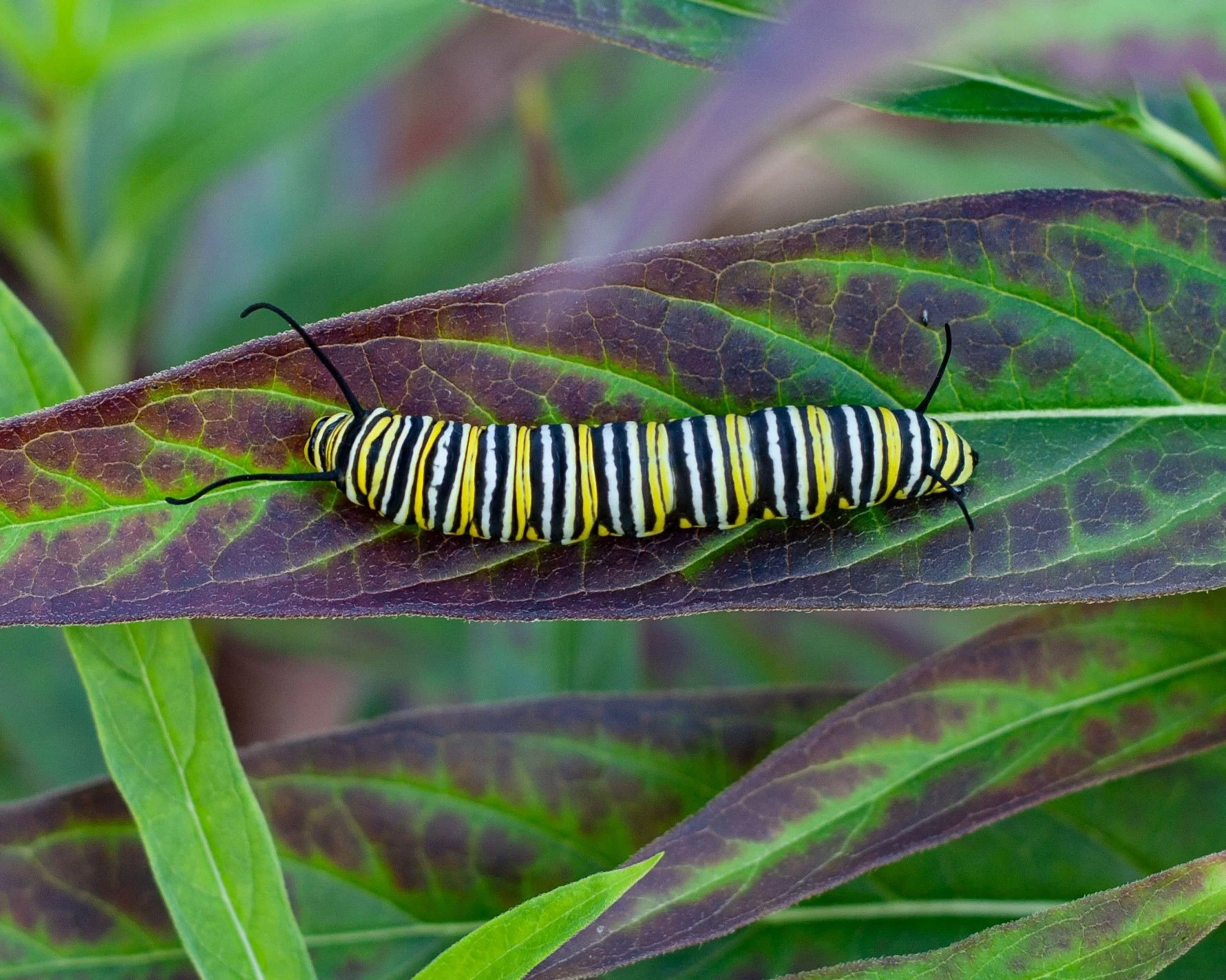September’s Treasures
Monarch caterpillar on Milkweed plant, September 16. ©2022, Elana Goren.
September brings hints of autumn to come. But there are still treasures to be found in the garden. The last of the Monarch caterpillars are getting ready for their next stage in life before they migrate down to Mexico for the winter. I found two in my garden yesterday and I thought it was an opportunity to discuss how Monarch butterflies are now considered an endangered species and what we, as gardeners, can do to provide food and shelter for them so that they don’t become extinct.
Monarch caterpillars feed only on Milkweed plants and there are a variety of Milkweed species to choose from for your garden. Milkweed plants also provide nectar for a variety of pollinators and they are an important addition to any planting plan. I’ve got some favorite Milkweed species in my garden and I’ll share those here. There is the beautiful Swamp Milkweed, Asclepias incarnata, with white tips rising from pink, continuous-blooming flowers. There is also a white variety called ‘Ice Ballet’ but most varieties are pink. For a pop of orange color in the garden, consider Butterfly Milkweed, Asclepias tuberosa, which doesn’t grow as tall as Swamp Milkweed and can more easily fit in lower-growing garden spots. Common Milkweed, Asclepias syriaca, has more mauve-pink flowers and spreads easily by seed. All are great for wildflower areas of the garden and Common Milkweed will naturalize very readily.
Whatever type of Milkweed(s) you choose to put in your garden, be sure that the pollinators, especially Monarch butterflies, will be grateful that they are there for their survival. You can check out the Butterfly Milkweed Factsheet for more information on Butterfly Weed, Asclepias tuberosa. More factsheets on other Milkweed species will be posted and you can find all native plant factsheets that we have posted on our Plant Factsheet Page.
